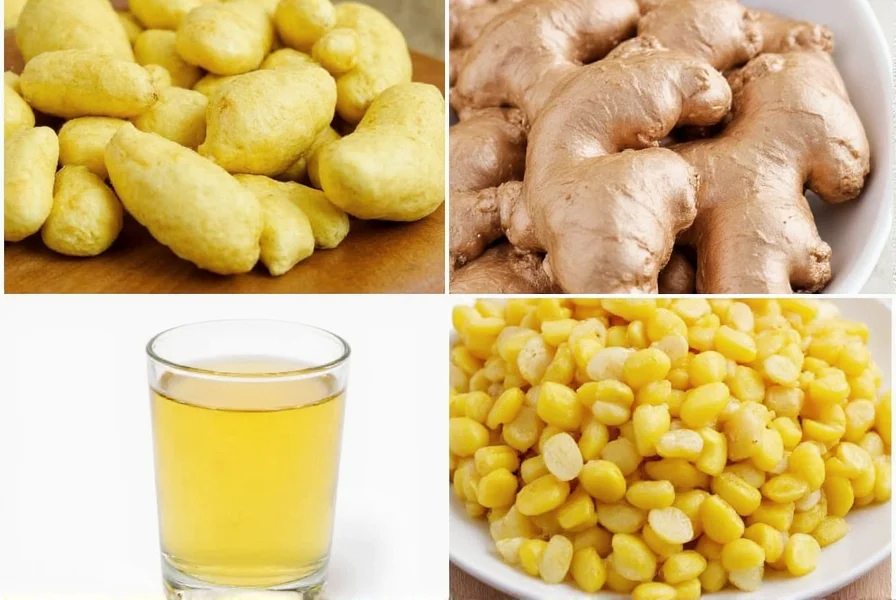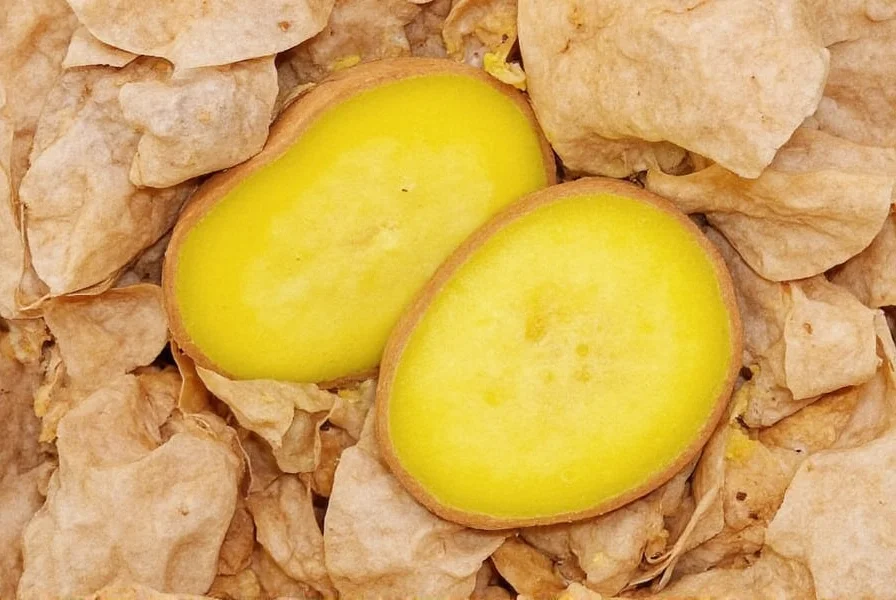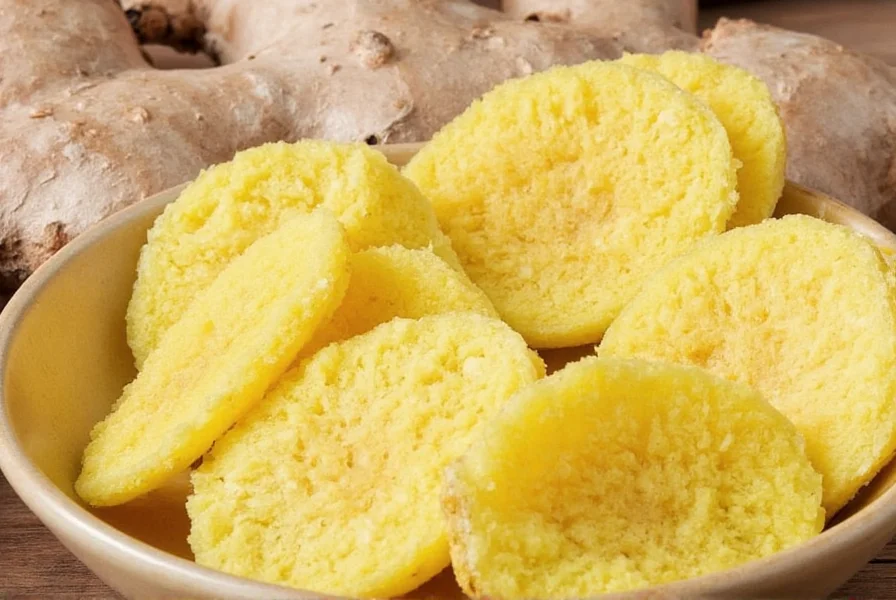Table of Contents
Top 10 Substitutes for Fresh Ginger Root
| Substitute | Flavor Profile | Ratio vs. Fresh Ginger | Best For | Notes |
|---|---|---|---|---|
| Ground Ginger | Warm, spicy, less sharp than fresh | ¼ tsp = 1 tbsp grated ginger | Baking, desserts, marinades | Milder; lacks the bite of fresh root |
| Galangal | Crisp, peppery, citrusy | 1:1 (thinly sliced or grated) | Thai soups like Tom Kha Gai | Not interchangeable in sweet dishes |
| Turmeric | Earthy, slightly bitter | ½ tsp = 1 tbsp grated ginger | Color boost and mild spiciness | No heat; use with black pepper for absorption |
| Candied Ginger | Sweet and spicy | 1 tbsp chopped = 1 tbsp grated ginger | Desserts, teas, granola | Adjust sweetness accordingly |
| Garlic | Pungent, savory | 1 clove = 1 tsp grated ginger | Asian sauces, stir-fries | Adds umami but no warmth |
| Cardamom | Fragrant, citrusy, floral | ½ tsp ground = 1 tbsp grated ginger | Spiced drinks, baked goods | Better for aromatic lift than heat |
| Mace | Peppery, nutmeg-like | ¼ tsp ground mace = 1 tbsp grated ginger | Spice blends, meat rubs | Rare but potent — use sparingly |
| Nutmeg | Warm, earthy, slightly sweet | ¼ tsp ground = 1 tbsp grated ginger | Winter baking, creamy sauces | More fragrant than spicy |
| White Pepper | Sharp, clean heat | ¼ tsp ground white pepper = 1 tbsp grated ginger | Clear soups, light sauces | Adds heat without color |
| Jaggery + Lemon Zest | Sweet-tart with brightness | 1 tsp jaggery + ½ tsp lemon zest = 1 tbsp grated ginger | Mock-ginger flavor in sweets | For effect, not authenticity |

Pro Tips for Using Ginger Substitutes
- Less is more: Especially with powdered spices, start small and adjust as needed.
- Think about balance: If substituting for warmth, consider adding a pinch of cayenne or chili flakes.
- Texture matters: Fresh vegetables like garlic or galangal can be minced or grated similarly to ginger.
- Layer flavors: Combine two substitutes for depth — e.g., turmeric + cardamom or mace + nutmeg.
Frequently Asked Questions
Q: Can I use ginger powder instead of fresh ginger root?
A: Yes! Use ¼ teaspoon of ground ginger for every tablespoon of fresh grated ginger. Just keep in mind that the flavor will be more mellow and less pungent. Ground ginger works best in baked goods and slow-cooked dishes where the subtle flavor has time to develop.
Q: What's the difference between galangal and ginger?
A: Galangal has a sharper, more peppery flavor compared to the bright, spicy-sweetness of ginger. It's also less fibrous with a more citrusy note. They aren't fully interchangeable, especially in traditional Thai dishes where galangal is essential. If substituting ginger for galangal, add a squeeze of lime for that citrus element.
Q: Does turmeric taste like ginger?
A: Not exactly. Turmeric has a more earthy and slightly bitter flavor, whereas ginger is spicy and aromatic. However, both come from the same plant family (Zingiberaceae) and are often used together in recipes. Turmeric provides color and mild warmth but lacks ginger's signature bite.
Q: Can I use garlic instead of ginger?
A: You can in some savory dishes, but note that garlic offers a completely different flavor profile. It adds savory depth but not the spicy warmth of ginger. Use 1 clove of garlic for every teaspoon of grated ginger. Best in Asian dishes where garlic is already common, but not recommended for sweet recipes.
Q: How do I know which substitute to pick?
A: Ask yourself: Is your recipe sweet or savory? How much "bite" do you want? Do you need color or texture? For baking, try ground ginger or cardamom. For Asian savory dishes, galangal or garlic work better. For color without heat, turmeric is ideal. When in doubt, combine two substitutes for balanced flavor.
Q: What's the best substitute for ginger in stir-fry?
A: Galangal is the closest substitute for stir-fry, providing that distinctive Southeast Asian flavor. If unavailable, use a combination of ½ tsp ground ginger plus 1 minced garlic clove per tablespoon of fresh ginger called for. This mimics both the warmth and aromatic quality of fresh ginger in high-heat cooking.
Q: Can I make my own ginger substitute with common pantry items?
A: Yes! For a quick fix, combine ¼ tsp ground cinnamon, ⅛ tsp ground cloves, and a pinch of white pepper to approximate 1 tbsp of fresh ginger. This works particularly well in baking recipes. For savory dishes, try 1 minced shallot plus a squeeze of lemon juice and a pinch of cayenne.
Q: How should I store ginger substitutes for maximum shelf life?
A: Store ground spices in airtight containers away from light and heat (not above the stove). They'll stay fresh for 6-12 months. Fresh alternatives like galangal can be frozen whole or sliced. Dried substitutes like jaggery should be kept in sealed containers with a silica packet to prevent hardening. Proper storage maintains potency and flavor.
Conclusion
You don't have to throw out your recipe just because you ran out of fresh ginger root. With these clever substitutes, you can save the day (or dinner!) without compromising on flavor.

Whether you're a seasoned chef or a curious kitchen explorer, knowing how to adapt your ingredients is a superpower. So go ahead, experiment with galangal, dabble in cardamom, and learn to love the versatility of ground spices.
Remember, cooking is about creativity — and sometimes the best recipes are born from necessity. Now go spice things up!











 浙公网安备
33010002000092号
浙公网安备
33010002000092号 浙B2-20120091-4
浙B2-20120091-4